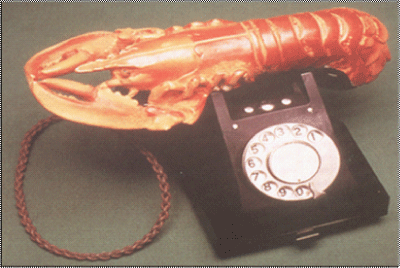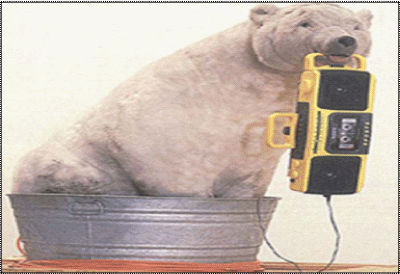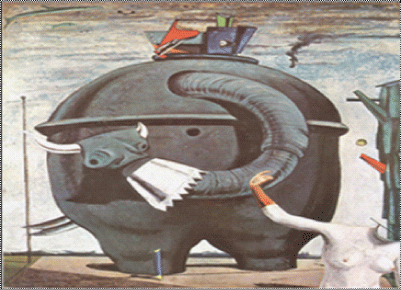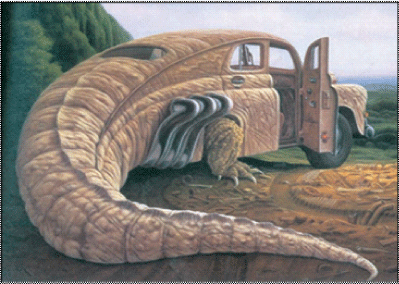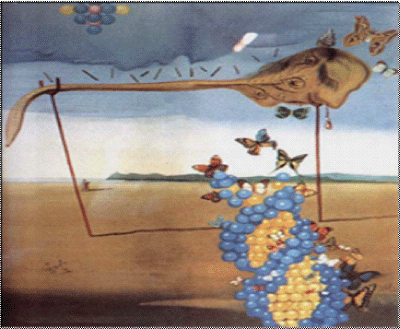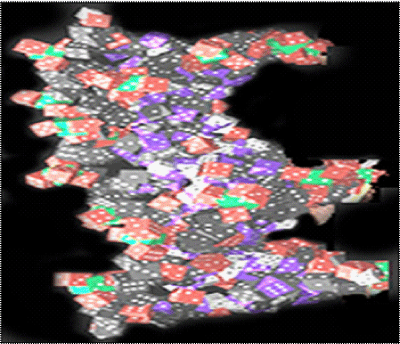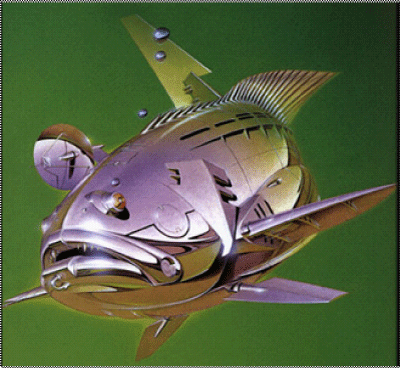| Rapid Communication |
Open Access |
|
| Abraham Tamir |
| Department of Chemical Engineering, Ben-Gurion University of the Negev, Beer-Sheba, Israel |
| *Corresponding author: |
Abraham Tamir
Department of Chemical Engineering
Ben- Gurion University of the Negev
Beer-Sheba, Israel
E-mail: atamir4@012.net.il |
|
| |
| Received June 19, 2012; Published June 27, 2012 |
| |
| Citation: Tamir A (2012) Scientific and technological aspects of biotechnology and their artistic demonstrations. 1: 119. doi:10.4172/scientificreports.119 |
| |
| Copyright: © 2012 Tamir A. This is an open-access article distributed under the terms of the Creative Commons Attribution License, which permits unrestricted use, distribution, and reproduction in any medium, provided the original author and source are credited. |
| |
| Abstract |
| |
| Biotechnology refers to the use of living organisms or their products to modify human health and the human environment. Among the definitions of biotechnology three of them read [1]: “Any technological application that uses biological systems to make or modify products or processes for specific use” or “Application of scientific and technical advances in life science to develop commercial products” but a simple definition reads “The use of living organisms by humans”. The major objective of this article is to demonstrate biotechnology by different artworks hoping that this approach will give a broad view on biotechnology that will make it obviously and perceptive. |
| |
| Keywords |
| |
| Biotechnology; DNA; Genome; Biochemistry; Cell biology; Genetics; Embryology |
| |
| Introduction |
| |
| The science of biotechnology is a combination of biology and technology to make or modify products, improve plants or animals, or develop microorganisms for specific uses. Modern biotechnology includes the industrial use of recombinant DNA, cell fusion, novel bioprocess techniques, and bioremediation. And most important, future biotechnology may be engaged in human creation. More information about biotechnology can be found at refs. [2,3]. |
| |
| Modern biotechnology, surprisingly, is very ancient, about 5700 years. The first biotechnologist was God, as indicated in Genesis 1:27: “So God created man in his own image, in the image of God he created him...” Is not this what modern biotechnology is striving at? Regarding this point, President Bill Clinton said on June 2000 after the announcement that the first draft of the Human Genome Project was completed: “Today we learn the language by which God created life.” The Human Genome Project [4] is an international scientific research project with a primary goal of determining the sequence of chemical base pairs which make up DNA, and of identifying and mapping the approximately 20,000-25,000 genes of the human genome from both a physical and functional standpoint. The project began in October 1990 by the Office of Biological and Environmental Research in the U.S. Department of Energy’s Office of Science. A working draft of the genome was announced in 2000 and a complete one in 2003, with further, more detailed analysis still being published. A parallel project was conducted outside of government by the Celera Corporation, which was formally launched in 1998. Most of the governmentsponsored sequencing was performed in universities and research centers from the United States, the United Kingdom, Japan, France and Germany. Researchers continue to identify protein-coding genes and their functions; the objective was to find disease-causing genes and possibly use the information to develop more specific treatments. It also may be possible to locate patterns in gene expression, which could help physicians glean insight into the body’s emergent properties. While the objective of the Human Genome Project is to understand the genetic makeup of the human species, the project has also focused on several other nonhuman organisms such as the fruit fly and the laboratory mouse. It remains one of the largest single investigative projects in modern science. |
| |
| The second example of biotechnology from Biblical times is related to the first wine production by Noah in Genesis 9:20-21: “Noah, a man of the soil, proceeds to plant a vineyard. When he drank some of its wines, he became drunk and lay uncovered in his tent.” It is quite clear, although not elaborated, that Noah manufactured the wine by some biotechnological process. Futurists predict that in the 21st century biotechnology will outgrow its academic roots and become a key commercial technology, doing more for mankind than the semiconductor chip has done during the 20th century. We are now after the most important breakthroughs of all times: deciphering the human genome, the 100,000 genes encoded by 3 billion chemical pairs in our DNA. With that information we may someday be able to create an artificial human brain, which one will use as his modified extra brain. The cloning of Dolly in 1997 in Scotland by embryologist Ian Wilmut was the first step towards human cloning. He took a cell nucleus from a six-year-old ewe, inserted it to another acolyte, passed an electric charge through the composite cell to get it growing, and eventually created the twin Dolly. On October 4th 2000 one could read in the newspaper that parents in USA have agreed to the genetic design of their second baby in order to provide the suitable medulla ossium for his sick sister because no appropriate donor could be found. The design of babies and human cloning is confronting the world so rapidly that doctors, ethicists, religious leaders and politicians are just starting to grapple with the implications and trying to decide how they feel about it all, and how the thoughts belonging to different disciplines can be translated into policy decisions. |
| |
| Biotechnology deals with many branches [5]: 1) Biochemistry that is the study of the structure, composition, and chemical reactions of substances in living systems. 2) Cell biology which is the scientific discipline that studies cells, their physiological properties, their structure, the organelles they contain, interactions with their environment, their life cycle, division and death. 3) Genetics that deals with the molecular structure and function of genes. 4) Molecular biology that is the branch of biology dealing with the molecular basis of biological activity. 5) Embryology, the science that is about the development of an embryo from the fertilization of the ovum to the fetus stage. 6) Robotics that deals with the design, construction, operation, structural disposition, manufacture and application of robots and computer systems for their control, sensory feedback and information processing. 7) Information technology, the branch of engineering that deals with the use of computers and telecommunications to store retrieve and transmit information. 8) Chemical engineering that is concerned in design of processes for the purpose of production, transformation and transportation of materials. 9) Animal husbandry that is the science of taking care of domestic animals that are used primarily as food or product sources. And finally a citation about the future of biotechnology [6]:” The future of the biotechnology is quite bright which provides a quality and an improved life, diseases expunged and untold possibilities. It would work in very environmentally process for a clearer and healthier planet. It has also held the promise for effective treatment like polio and small pox.” |
| |
| Artistic Demonstrations of Biotechnology |
| |
| The major objective of this article is to demonstrate biotechnology by artworks that makes this science more tangible to people. Most of the pictures demonstrate qualitatively the idea that Biotechnology = Biology + Technology. For example, the Spanish surrealist painter, sculptor, graphic and designer artist Salvador Dali (1904-1989) demonstrates this interaction in his “Lobster Telephone” [7] in Figure 1. It is a classic example of a Surrealist object made from the conjunction of items not normally associated with each other, resulting in something both playful and menacing. A similar approach was performed by Mark Dion who painted Figure 2, “Polar Bears and Toucans” [8] where here the Sony symbolizes biotechnology sports cassette player. Mark Dion (1961) is an American artist whose work features aspects of archaeology, ecology and detection and collecting. He was fascinated by the principles of taxonomy - the systems by which people seek to bring order to the world and has been inspired by 19th-century naturalists like Charles Darwin and Alfred Russell Wallace. Other examples are “The Elephant of the Celebes” [9], Figure 3, by Max Ernst (1891-1976), German painter, sculptor, one of the leading advocates of irrationality in art, and an originator of the Automatism movement of Surrealism. The second example is the “Attack at Dawn” [10], Figure 4, by the Polish Jacec Yerka (1952) whose paintings are acrylic on canvas and carefully rendered, using images from his childhood, including his grandmother’s kitchen. Both pictures demonstrate a metamorphosis from an animal to a car. It should be emphasized that in all above examples the artists did not intend to demonstrate biotechnology, however their artwork do illustrate the idea in a most convincing and powerful way. |
| |
|
|
Figure 1: The telephone and the lobster. |
|
| |
|
|
Figure 2: Metamorphosis from an animal to a car. |
|
| |
|
|
Figure 3: Elephant simulation. |
|
| |
|
|
Figure 4: The bear and the instrument. |
|
| |
| Francis Crick, who in 1953 together with James Watson discovered the double helix structure, said that “DNA is such an important molecule that it is almost impossible to learn too much about it.” Francis Harry Compton Crick (1916-2004) was an English molecular biologist, biophysicist, and neuroscientist where James Dewey Watson (1928) was an American molecular biologist, geneticist and zoologist. They were awarded the 1962 Nobel Prize in Physiology or Medicine for their discoveries concerning the molecular structure of nucleic acids and its significance for information transfer in living material. DNA, deoxyribonucleic acid, carries the genetic code and has been likened to a twisted rope ladder. |
| |
| The “Godfather” of biotechnology, DNA, is demonstrated in Figure 5 by Salvador Dali entitled “Butterfly Landscape, The Great Masturbator in Surrealist Landscape with DNA”. The other demonstration by an unknown artist of DNA in Figure 6, dice-constructed, may indicate that its complete construction remains, to a certain extent, random. Giuseppe Arcimboldo, Italian, is particularly famous for assembling fruits, flowers, vegetables, or animals, into playfully bizarre portraits. Such combinations are interpreted by our brain as a face because they contain characteristic elements such as eyes, nose, and mouth in their natural position. Arcimboldo understood this psychology almost 450 years ago. “The Librarian” [12] in Figure 7 is composed of realistically painted books that create the face of a librarian. Books are knowledge and knowledge is the source for biological and technological developments. And finally Figure 8 entitled “Sorayama animal” concludes our presentations by simulation of biology with a fish that looks also as an airplane, an extremely important and common technological device. In summary, the author believes that the artistic demonstrations of biotechnology will educate people to look at Science through the “eyes” of Art. |
| |
|
|
Figure 5: The source of knowledge for biotechnology. |
|
| |
|
|
Figure 6: The DNA molecule. |
|
| |
|
|
Figure 7: Simulation of biology by technology. |
|
| |
|
|
Figure 8: The DNA of living organisms. |
|
| |
| Summary |
| |
| As indicated biotechnology is the combination of two important areas, biology and technology. Biology is the natural science concerned with the study of life and living organisms where technology is the application of science to industrial or commercial objectives. The combination of the two generates a new area detailed above where most important, future biotechnology may be engaged in human creation. In order to make this important field obviously and more perceptive - the major objective of this article - different components of biotechnology were demonstrated by artworks where most probably, even the artists have not even thought their paintings would be applied for this specific purpose. From the author’s long experience in demonstrating scientific subjects via art, the author believes that the artistic demonstration of biotechnology gives a broad perceptible view on biotechnology. |
| |
| |
| References |
| |
- Google- under the title “Biotechnology”
- Google- under the title “Biotechnology - Wikipedia, the free encyclopedia”
- Google- under the title “What is Biotechnology? | Biotechnology Institute”
- Google- under the title “Human Genome Project - Wikipedia, the free encyclopedia”
- Google- under the title “What are the different types of Biotechnology”
- Google- under the title “What is the future of biotechnology? - Biotechnology Forums”
- Google- under the title "Lobster Telephone"
- Google- under the title "Polar Bears and Toucans"
- Google- under the title "The Elephant of the Celebes"
- Google- under the title "Attack at Dawn"
- Google- under the title "Great Butterfly Landscape, The Masturbator in Surrealist Landscape with DNA"
- Google- under the title "The Librarian"
- Google- under the title “Sorayama animal”
|
| |
| |

